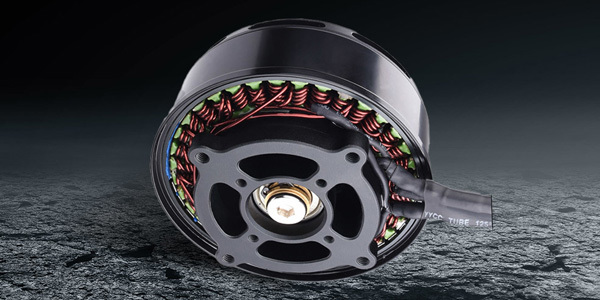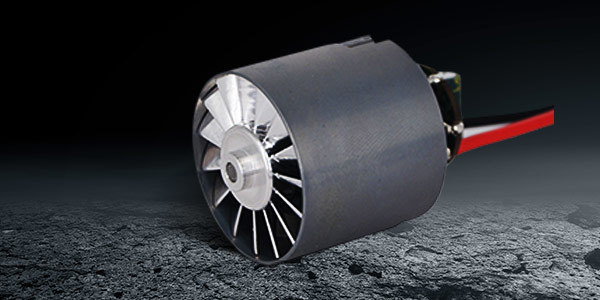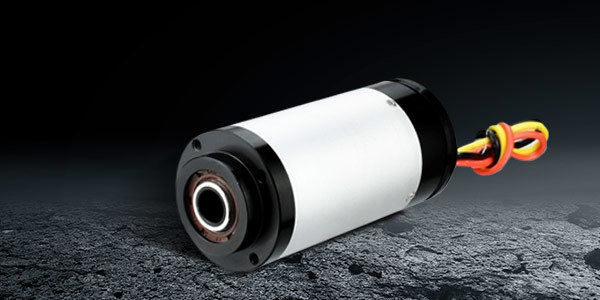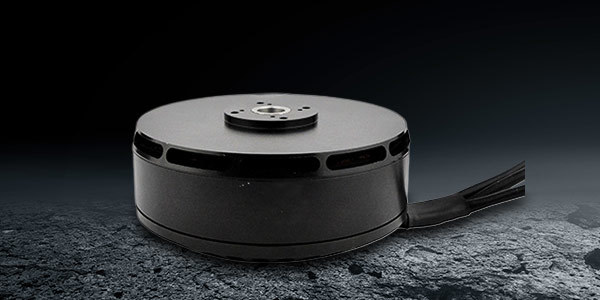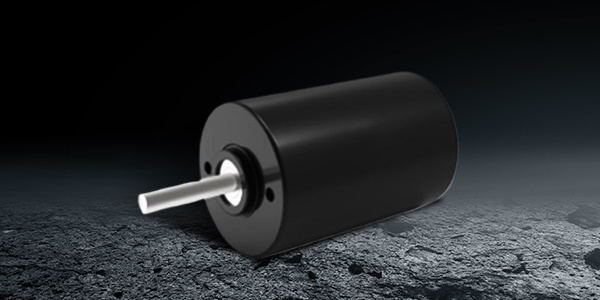Jul 18,2025
Exploring the Mechanisms Behind Sensorless BLDC Motors: A Comprehensive Guide
Exploring the Mechanisms Behind Sensorless BLDC Motors Table of Contents 1. Introduction to BLDC Motors 2. What Are Sensorless BLDC Motors? 3. Mechanisms of Sensorless BLDC Motors 4. Advantages of Sensorless BLDC Motors 5. Applications of Sensorless BLDC Motors 6. Control Strategies for Sensorless BLDC Motors 7. Common Challenges and Solutions 8. Future Trends in B
Exploring the Mechanisms Behind Sensorless BLDC Motors
Table of Contents
- 1. Introduction to BLDC Motors
- 2. What Are Sensorless BLDC Motors?
- 3. Mechanisms of Sensorless BLDC Motors
- 4. Advantages of Sensorless BLDC Motors
- 5. Applications of Sensorless BLDC Motors
- 6. Control Strategies for Sensorless BLDC Motors
- 7. Common Challenges and Solutions
- 8. Future Trends in BLDC Technology
- 9. Frequently Asked Questions
- 10. Conclusion
1. Introduction to BLDC Motors
Brushless Direct Current (BLDC) motors are revolutionizing the realm of electric motor technology. Unlike traditional brushed motors, BLDC motors utilize electronic commutation to eliminate the need for brushes, thereby enhancing efficiency and longevity. These motors are characterized by their high power-to-weight ratio, excellent control capabilities, and reduced maintenance costs.
The absence of brushes in BLDC motors results in decreased friction and wear, leading to improved performance. As industries strive for more efficient and reliable solutions, the adoption of BLDC motors continues to grow across various applications.
2. What Are Sensorless BLDC Motors?
Sensorless BLDC motors are a specific category of BLDC motors that operate without physical sensors to detect rotor position. Instead, they rely on back electromotive force (back EMF) and advanced algorithms to estimate rotor position, enabling efficient control and operation.
This sensorless approach not only simplifies the motor design—reducing costs and potential points of failure—but also enhances reliability and ease of integration into various systems. As a result, sensorless BLDC motors have gained popularity in applications where size, weight, and cost are critical factors.
3. Mechanisms of Sensorless BLDC Motors
Understanding the mechanisms behind sensorless BLDC motors requires an exploration of their fundamental components and operation principles.
3.1 The Role of Back EMF
Back EMF is a voltage generated by the motor windings as the rotor spins within a magnetic field. In sensorless BLDC motors, this back EMF serves as an essential feedback signal for estimating rotor position. By analyzing the phase voltages, the motor control system can determine the rotor's angular position and adjust the commutation timing accordingly.
3.2 Control Algorithms
Sensorless control algorithms play a crucial role in the operation of these motors. There are several methods used for sensorless control, including:
- **Back EMF Zero-Crossing Detection:** This method detects when the back EMF crosses zero, allowing the controller to infer rotor position.
- **Extended Kalman Filter (EKF):** This advanced filtering technique estimates rotor position and speed by combining multiple sensor inputs and system models.
- **Sliding Mode Control:** A robust control strategy that adjusts motor performance based on discrepancies between desired and actual speed or position.
Each method has its advantages and is selected based on specific application requirements.
3.3 Commutation Techniques
In sensorless BLDC motors, proper commutation is vital for smooth operation. The commutation process involves switching the current in the motor windings at the right time to create a rotating magnetic field. This process is influenced by the feedback signals derived from back EMF, ensuring optimal motor performance.
4. Advantages of Sensorless BLDC Motors
Sensorless BLDC motors offer several advantages over their sensor-based counterparts:
4.1 Cost-Effectiveness
By eliminating the need for physical position sensors, sensorless BLDC motors significantly reduce manufacturing and maintenance costs. This makes them an attractive option for various applications.
4.2 Enhanced Reliability
Fewer components mean fewer points of failure. Sensorless BLDC motors are inherently more reliable since they do not depend on sensors that can wear out over time.
4.3 Compact Design
Sensorless designs allow for a more compact overall motor system. This is particularly beneficial in applications where space constraints are a concern.
4.4 Simplified Installation
The absence of sensors reduces complexity during installation, making sensorless BLDC motors easier to integrate into various systems.
5. Applications of Sensorless BLDC Motors
The versatility of sensorless BLDC motors has led to their widespread adoption across various industries. Some notable applications include:
5.1 Automotive Industry
In the automotive sector, sensorless BLDC motors are used in electric and hybrid vehicles for propulsion and auxiliary systems, such as power steering and HVAC systems.
5.2 Consumer Electronics
Sensorless BLDC motors are common in consumer electronics, including fans, pumps, and household appliances, where efficiency and compactness are paramount.
5.3 Robotics
In robotics, sensorless BLDC motors provide precise control for actuators and joints, facilitating smooth and accurate movement in robotic systems.
5.4 Industrial Automation
In industrial settings, these motors are utilized in conveyors, pumps, and other machinery, contributing to automated processes and increased efficiency.
6. Control Strategies for Sensorless BLDC Motors
The effectiveness of sensorless BLDC motors relies heavily on the control strategies employed. These strategies can vary based on application requirements but generally aim to achieve high performance, efficiency, and responsiveness.
6.1 Speed Control
Speed control is essential for applications requiring precise motor speed adjustments. By manipulating the voltage and current supplied to the motor based on feedback from back EMF, the controller can maintain the desired speed.
6.2 Position Control
For applications requiring accurate positioning, advanced control techniques such as PID (Proportional, Integral, Derivative) control or model predictive control (MPC) can be employed to ensure the motor reaches and maintains the desired position.
6.3 Torque Control
Torque control is vital in applications where varying loads are present. By continuously adjusting the input power based on real-time feedback, the system can ensure optimal torque delivery, enhancing overall performance.
7. Common Challenges and Solutions
While sensorless BLDC motors provide numerous benefits, they are not without challenges. Understanding these challenges and their solutions is crucial for successful implementation.
7.1 Startup Performance
Challenge: Sensorless BLDC motors may struggle to start from a standstill due to the lack of rotor position feedback.
Solution: Implementing advanced startup algorithms, such as pulse-width modulation (PWM) techniques, can help initiate motion effectively.
7.2 Torque Ripple
Challenge: The absence of sensors can lead to torque ripple, affecting smooth operation.
Solution: Utilizing advanced control strategies, such as field-oriented control (FOC), can minimize torque ripple and enhance motor performance.
7.3 Sensitivity to Load Changes
Challenge: Sensorless BLDC motors may exhibit performance issues with sudden load changes.
Solution: Employing adaptive control techniques can help the motor adjust more effectively to fluctuations in load, maintaining performance consistency.
8. Future Trends in BLDC Technology
The evolution of sensorless BLDC technology is ongoing, with several exciting trends on the horizon:
8.1 Integration with IoT
The integration of sensorless BLDC motors with the Internet of Things (IoT) is expected to revolutionize automation and control systems. Smart motors equipped with connectivity features will enable real-time monitoring and control, optimizing performance and energy efficiency.
8.2 Advanced AI Algorithms
The implementation of artificial intelligence (AI) in motor control systems can enhance predictability and efficiency. By analyzing operational data, AI can optimize control strategies and improve overall motor performance.
8.3 Miniaturization
As technology advances, the miniaturization of sensorless BLDC motors will continue, making them even more suitable for compact applications across various industries.
9. Frequently Asked Questions
9.1 What are the key benefits of using sensorless BLDC motors?
Sensorless BLDC motors offer cost-effectiveness, enhanced reliability, a compact design, and simplified installation, making them ideal for various applications.
9.2 How do sensorless BLDC motors determine rotor position?
They utilize back EMF generated during operation to estimate rotor position without the need for physical sensors.
9.3 In which industries are sensorless BLDC motors commonly used?
These motors are widely used in the automotive, consumer electronics, robotics, and industrial automation sectors.
9.4 What control strategies are employed in sensorless BLDC motors?
Common strategies include speed control, position control, and torque control, tailored to meet specific application needs.
9.5 What challenges do sensorless BLDC motors face?
Challenges include startup performance, torque ripple, and sensitivity to load changes, which can be addressed with advanced algorithms and control techniques.
10. Conclusion
Sensorless BLDC motors represent a significant advancement in electric motor technology, offering numerous advantages that cater to modern industry's demands for efficiency, reliability, and compact design. With ongoing innovations in control strategies and the integration of AI and IoT, the future of sensorless BLDC motors appears promising. Understanding their mechanisms, applications, and challenges positions engineers and professionals to harness their potential effectively, driving progress across various sectors. Embracing the capabilities of sensorless BLDC motors will undoubtedly pave the way for smarter, more efficient systems in the years to come.
Previous: None
Next: Understanding Industrial Brushless DC Motors: Efficiency and Applications

